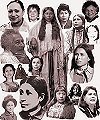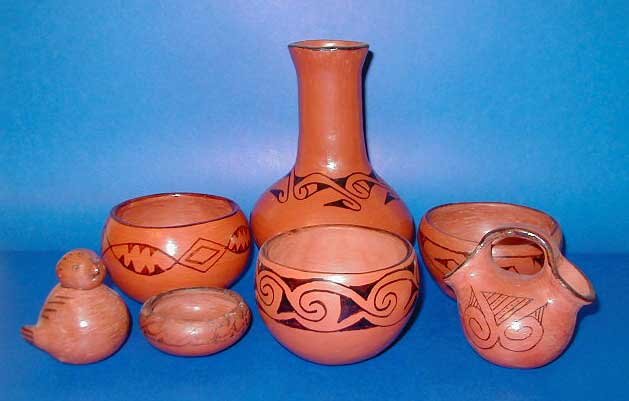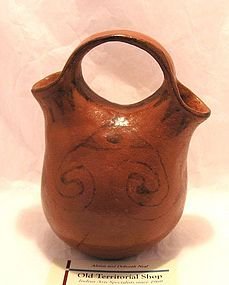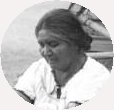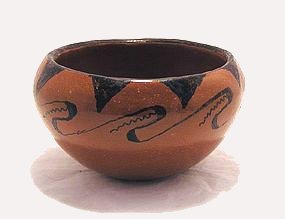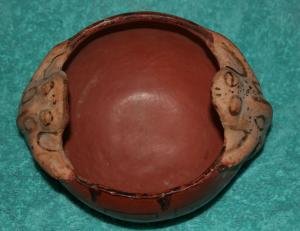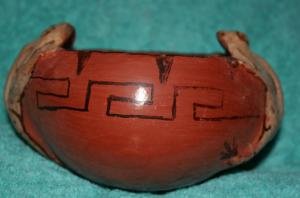Ida Redbird spent her entire life on the Gila River Indian Reservation. A member of the Maricopa tribe, she learned the craft of making the distinctive dark red Maricopa pottery.
Although she didn't travel herself her name is known where-ever pottery experts live.
The following is a partial history of her life, taken from a book and from museums. From it we can deduce that she was an innovative, bright woman who spoke English, knew natural medicines, was married, had at least one son, was artistic, cared about her tribe and was respected in both her field and her life.
"Ida Redbird, a tall and exceptionally handsome Maricopa, is well informed on medicinal plants and is one of the two best potters on the Maricopa Reservation; indeed her pottery is of surpassing excellence in design and finish, and invariably wins prizes at exhibitions."
"Ida Redbird whom I had brought from the Maricopa Reservation as interpreter"
"Ida Redbird, had learned the medicinal value of the elderberry blossom"
"My Maricopa informant, Ida Redbird, revealed the following: 'To prevent infection in the navel of a newborn child, mesquite gum is pounded into powder and mixed with very fine sand strained through cheesecloth. The compound is then tasted, and if not too bitter, it is sprinkled on the navel and pressed down. For pink eye, Ida's uncle used to pound the green mesquite leaves, boil a handful in water, and place them on his eyes, a treatment that gave him relief.'"
"Ida Redbird's husband, a Maricopa, boasted that eating the spurge while driving cattle would not affect him. However, on one occasion he ate too much and was forced to dismount, vomit, and roll around on the ground in great pain. This tale of hlm was related by his son. Now, when constipated, the same man isolates himself and eats a small quantity of spurge which acts as an emetic and a laxative, but it cures his trouble."
The above all taken from the book 'By the Prophet of the Earth' by L.S.M. Curtin
Ida Redbird was a well respected woman who was a leader of the Maricopa Pottery Cooperative that she helped to establish in 1937. She was one of the potters and their spokeswoman who worked with local and regional museums to form the Cooperative. Between 1937 to 1940 the twenty women members, (including Mary Juan, Pearl Miller and Lula Young,) who subscribed to standards of excellence, strove to put Maricopa pottery in the spotlight by building a retail market for their work and establishing a relationship with dealers, galleries and buyers of their work the Cooperative also included special demonstrations and exhibits. However lack of transportation, World War II, and accompanying shortages and rationing and the death of one of their strongest members were all factors that stopped the Cooperative from working.
Ida served as the first president of the Maricopa Pottery Makers Association (MPMA) and was renowned as the best-known potter of the tribe. She shared her talents through pottery-making sessions held in various school districts and at the Heard Museum.
The Ida Redbird Scholarship Endowment was created to honor her and in 2003 the Ida Redbird Elementary School in Mesa AZ was named after her.
Ida Redbird is also inducted into the Arizona Women's Hall of Fame.
|

